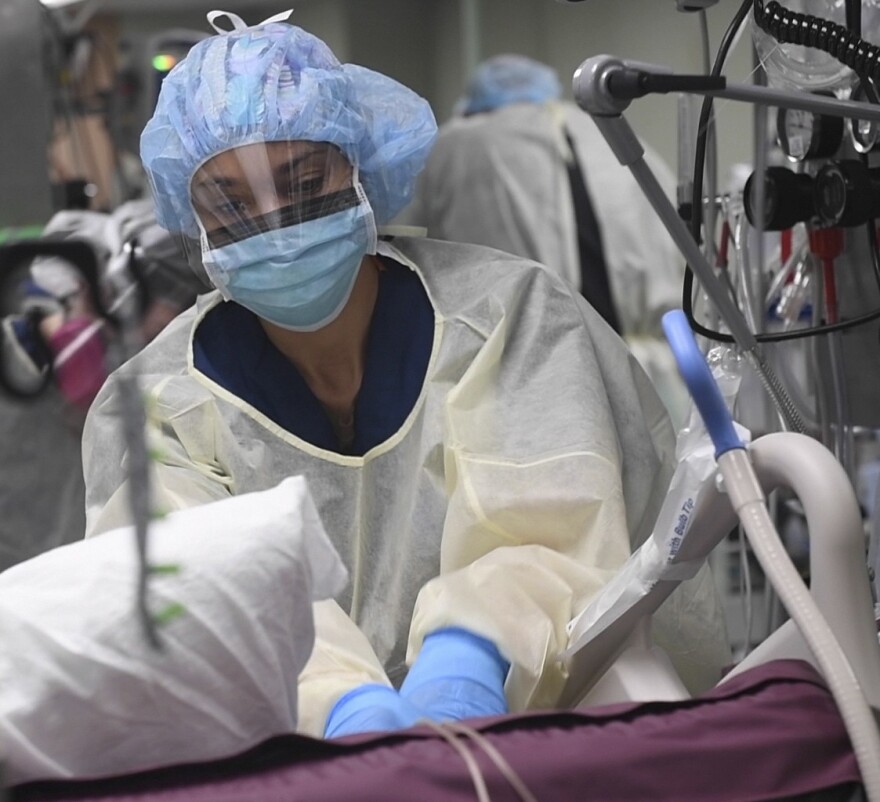Researchers from Texas Tech developed a model that forecasts COVID-19 trends for six states. The predictions for Texas are pretty grim. “This is it,” said Dr. Fazle Hussain, one of the researchers
“This is the reality. Get used to it. It’s not going to disappear.”
Zeina Khan is a research assistant professor of mechanical engineering at Tech. She says they have new predictions for Texas after the recent spike in numbers throughout June. If current trends continue, in October Texas can expect the total number of new COVID cases to rise to about 120 thousand daily cases, that’s up 566%. And Texas is predicted to see 900 deaths per day. To provide a little more context, last time they ran the numbers, back in April, the prediction for October was 18 thousand new cases a day.
“This study points to the dire need for people to take things more seriously,” Khan said.
However, If people stay home, wear masks and wash their hands, these predictions can change. “It could change for the better and that’s what I’d really like to emphasize,” she says.
So far, they’ve looked at six states—New York, New Jersey, California, Texas, Louisiana and Washington—that offer plenty of data. Each had a different curve in cases. The most striking difference was between Texas and New York.
According to Hussain, they found that usually has a peak that then comes down, followed by a second peak. “For Texas,” he said, “it keeps going on it doesn’t come down at all. And for New York, the peak was much higher, but it keeps coming down.”
Texas is in its second peak right now. They’ve limited their predictions to two years. After that, the forecast becomes less reliable.
Researcher Khan says the model is based on simple mathematical equations. They came up with seven compartments or categories to define the population. A person can only fit into one category at a time.
These categories are things like “infected detected”—people who tested positive and are probably in quarantine. There’s “Susceptible”—those who can still get infected. And “infected not detected” – like asymptomatic carriers.
Politics don’t fact into the outcomes, but the results often point to the politics of the area. “Like Texas had the worse quarantine adherence parameter of all the states,” Kahn said. “But if you look at it, our governor suggested people stay home it was never made an order.” That was not the case in New York. People followed the stay-at-home orders much more strictly.
Fazle Hussain says from the mathematical findings, they can hypothesize a few physical reasonings for the predicted outcome. And when it comes to a vaccine, Hussain has this warning.
“Vaccines are not going—you may have a vaccine in a couple of months, but it won’t be proven [at the time],” he said. “I suspect when we have a vaccine, maybe a year from now, we’ll probably have about ten or 20, which one is more effective?”
He predicts that there will be a lot of trial and error to determine the best vaccine for mass distribution. And there’s still so much we don’t know about immunity to the virus. Some studies suggest that a person who tests negative for antibodies may still have some immunity to it. Meanwhile other research out of China shows that antibodies for COVID-19 faded quickly in both symptomatic and asymptomatic patients.
“It will take years to determine,” Hussain said. And even then, there’s still the question of how to distribute a vaccine to over 7 billion people around the world.
The big takeaway, according to Hussain is that we have to get used to the way things are. “This is the lifestyle we have to get used to is,” he said. “Not go out so much. Not go out to eat in restaurants and our lifestyle, our food habits, our cultural habits will change and have to change.”
*Correction: “This story previously contained a hypothesis that has not been verified by research.”




